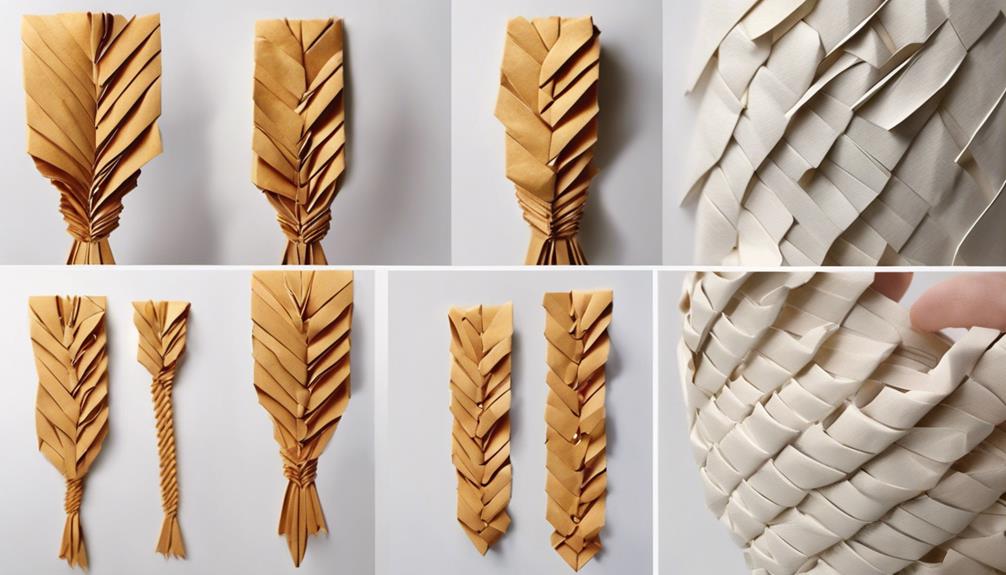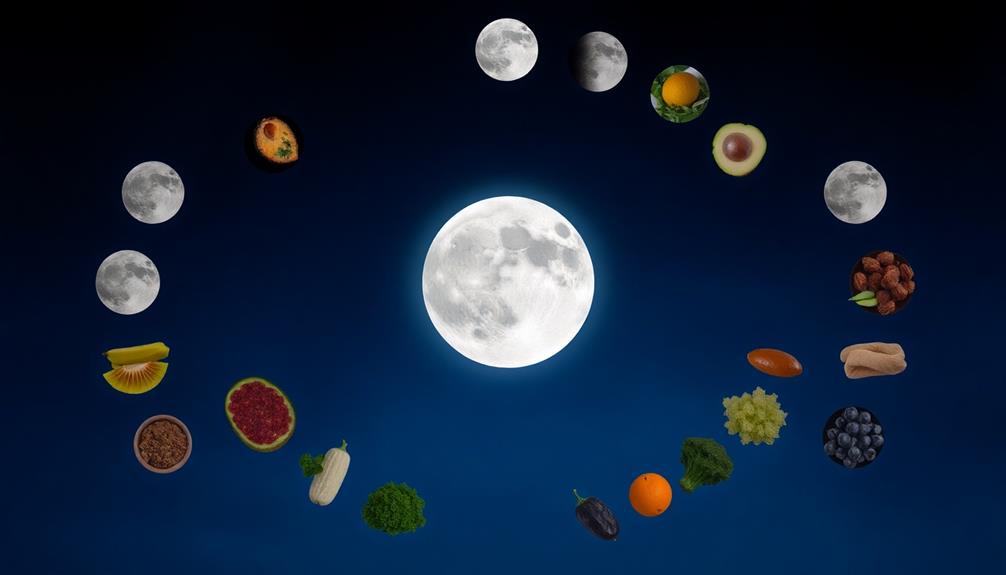Discover a variety of braided hairstyles to elevate your look: embrace the timeless allure of Basic, French, and Dutch braids, or opt for a contemporary flair with Pull-Through and Fishtail styles. Explore specialized techniques with the intricate Waterfall braid, conveying cascading elegance, or experiment with the intricate twists of the Twisted Rope braid for a unique touch. Each braid offers a distinctive aesthetic and allows for creativity in hairstyling. Mix and match these braids to suit different occasions and moods, ensuring your hair always exudes elegance and charm. Embrace the versatility of braids and uncover a world of styling possibilities.
Key Takeaways
- Basic Braid: Versatile foundation for various styles.
- French Braid: Classic, elegant look with small sections.
- Dutch Braid: Trendy twist with voluminous effect.
- Pull-Through Braid: Distinctive style with clear elastics.
- Waterfall Braid: Romantic cascade for elegance.
Basic Braid
To create a basic braid, one must first divide the hair into three sections and cross them over each other. This simple yet versatile style is the foundation for many other braid variations.
The basic braid can be worn as a single braid down the back, a stylish side braid cascading over one shoulder, or even divided into pigtails for a playful look. Mastering the basic braid is essential before attempting more complex braid styles.
By understanding the technique of crossing the sections over each other, individuals can progress to creating advanced braids with multiple strands and intricate designs. The basic braid serves as a fundamental building block in the world of hairstyling, providing a solid starting point for those looking to experiment with different braid patterns and textures.
French Braid
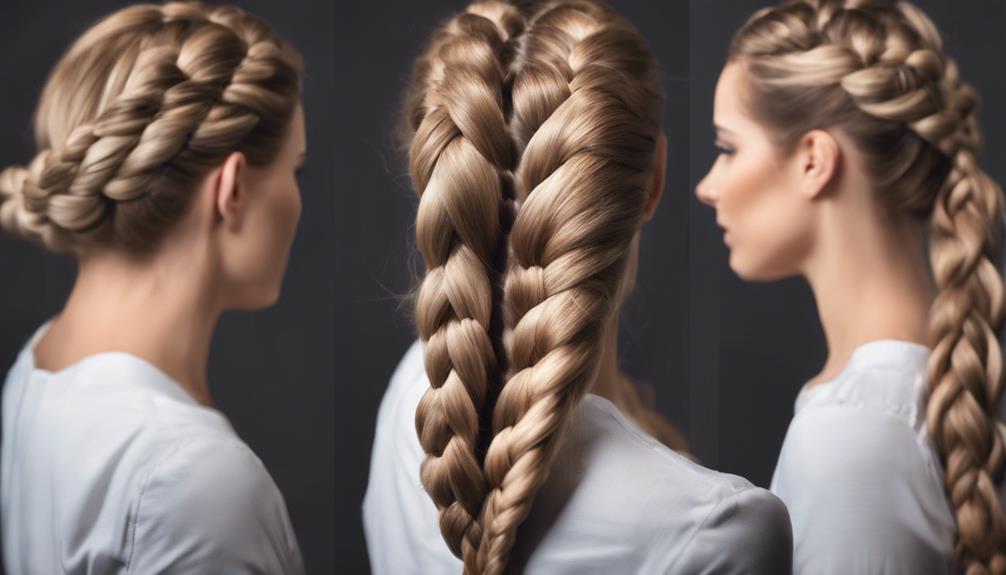
The French braid is a classic hairstyle that exudes elegance. It is a step up from the basic braid. This style showcases intricate weaving by incorporating small sections of hair as you progress down the head.
French braiding may seem challenging initially, but with practice and the aid of tutorials, mastering this technique can lead to a polished and sophisticated look.
French Braid Basics
French braid, a classic and elegant style, incorporates small sections of hair as it's braided down. This braiding technique starts near the crown of the head, adding a touch of sophistication to the traditional braid.
While the French braid may seem intricate at first, with practice, it becomes more manageable, especially when done on damp hair. The process involves crossing sections of hair over each other, resulting in a beautiful and practical hairstyle that's perfect for various occasions.
Mastering the French braid technique is a valuable skill as it can be used to create a wide range of intricate braided styles. Whether you're looking for a sleek and polished look or a more casual yet put-together appearance, the French braid offers versatility and elegance.
Styling French Braids
For those looking to elevate their hairstyle game, mastering the art of styling French braids can be a game-changer. French braids, also known as classic French braids, are a popular choice for many due to their elegant and practical appeal. These braided styles involve weaving small sections of hair along the scalp, starting near the crown and cascading down the back.
Braiding hair into French braids can work well with various hair types, making it a versatile option for different individuals.
Many opt for French braids as protective styles that can help maintain hair health and reduce tangles. Additionally, incorporating hair extensions can add volume and length to French braids, enhancing the overall look. When done properly, these types of braids can last for several days, making them a convenient choice for those with busy schedules.
Whether worn casually or for formal events, French braids are a timeless and sophisticated option that can complement various outfits and occasions.
Dutch Braid
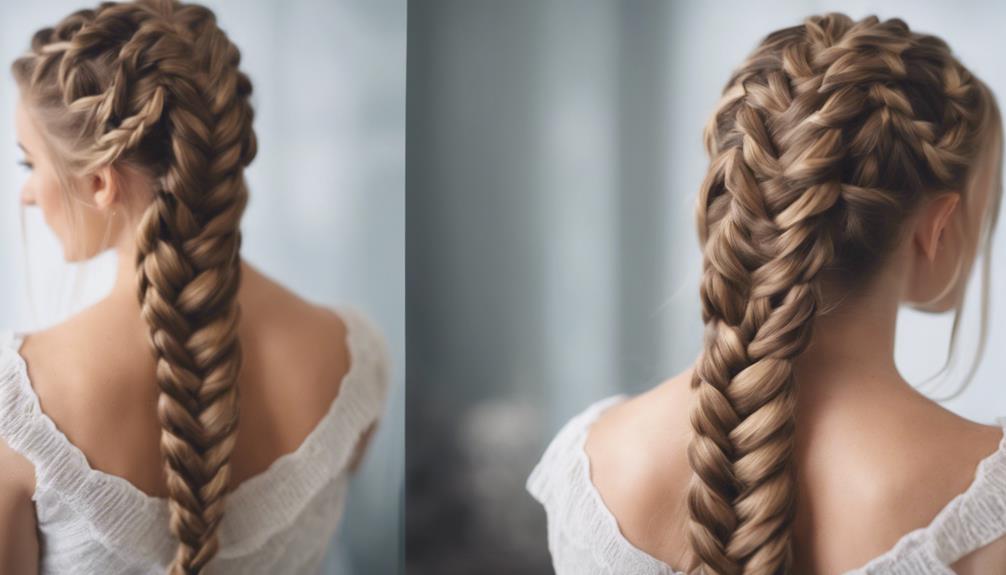
The Dutch braid is a trendy twist on the classic French braid, achieved by crossing sections under the middle strand, creating a unique look.
By incorporating hair while braiding, this technique results in a voluminous and striking hairstyle.
Beginners can benefit from tutorials to master the Dutch braid technique and elevate their braiding skills.
Dutch Braid Technique
To master the Dutch braid technique, beginners can enhance their skills by practicing with tutorials.
The Dutch braid, also known as an inverted French braid, involves crossing sections under the middle strand instead of over, creating a unique accentuated look. This technique adds hair to the braid as you go along, which sets it apart from traditional hairstyles.
Watching tutorials can be particularly helpful for those new to Dutch braiding, as it offers a visual guide to understanding the process. Dutch braids are a great way for beginners to step up their braid game and add volume and visual interest to their hairstyles.
Styling Dutch Braids
When styling Dutch braids, beginners can achieve a voluminous and sophisticated look by incorporating hair sections underneath the middle strand. This technique of weaving sections beneath the central hair piece creates a unique and intricate style that sets Dutch braids apart from traditional braiding methods.
By incorporating hair as you braid down the scalp, the Dutch braid technique enhances the overall appearance, adding volume and depth to the hairstyle. For those new to Dutch braiding, watching tutorial videos can be beneficial in mastering the art of incorporating sections seamlessly.
Unlike French braids, Dutch braids offer a more accentuated and sophisticated look, making them a popular choice for those seeking a stylish and elevated hairstyle. The intricate weaving of hair sections in Dutch braids creates a visually striking effect that can be both eye-catching and elegant.
Pull-Through Braid
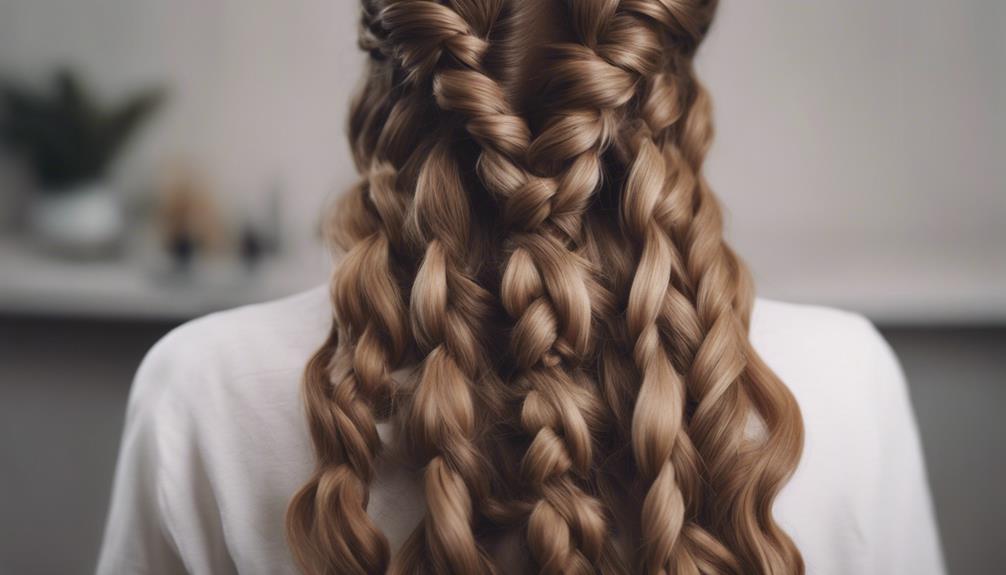
Achieving a visually striking pull-through braid is made easy by separating sections of hair and securing them uniquely with clear elastics. This style offers a distinctive look that stands out, thanks to its intricate yet simple method of creation. Unlike traditional braids that require complex weaving, the pull-through braid is accessible to beginners and experts alike. By following a tutorial, individuals can master the art of crafting this braid and experiment with different variations to suit their preferences. Clear elastics play a crucial role in achieving the pull-through effect, ensuring each section of hair is flawlessly integrated into the overall design. Moreover, adding accessories such as ribbons or beads can elevate the appeal of the pull-through braid, giving it a personalized touch that reflects individual style. Embracing the pull-through braid opens up a world of creative possibilities for those seeking a modern twist on a classic hairstyle.
| Key Points | Details |
|---|---|
| Pull-Through Braid | Visually Striking |
| Easy to Achieve | Unique Way |
| Clear Elastics | Tutorial |
| Distinctive Look | Accessories |
| Personalized |
Fishtail Braid
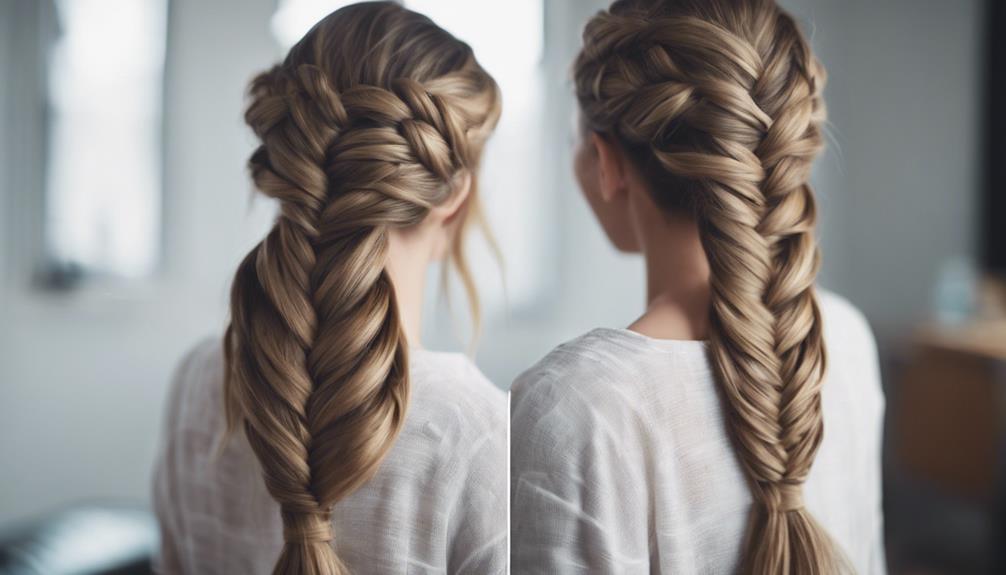
How can one create a visually appealing fishtail braid?
The fishtail braid, a popular braid style, involves weaving hair in a criss-cross pattern, giving it a unique and stylish look.
To start, separate your hair into two sections, which form the foundation of the braid. For better control, practice creating a fishtail braid on a low ponytail before attempting the full braid.
If you're unsure how to begin, watching tutorial videos can be incredibly helpful in mastering the technique.
The fishtail braid is often associated with a mermaid-inspired aesthetic, adding a touch of whimsy to your hairstyle.
Its intricate design and resemblance to a fishtail make it a favorite choice for those looking to stand out with a distinct braid style.
Whether you're heading to a casual gathering or a formal event, the fishtail braid is a versatile option that can elevate your look effortlessly.
Waterfall Braid
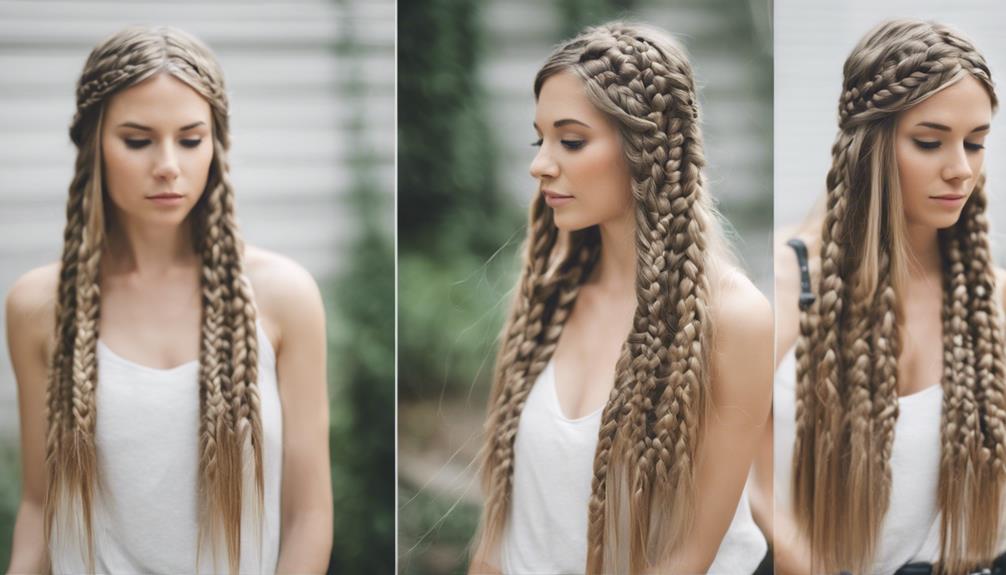
Creating a waterfall braid involves elegantly weaving sections of hair in a horizontal French braid pattern, cascading down in a visually stunning manner. This intricate style exudes a romantic and elegant charm, making it a go-to choice for special events and formal occasions.
The horizontal French braid technique used in the waterfall braid adds a touch of sophistication to any hairstyle. Learning how to master this braid can elevate your styling skills and give you a polished look for various occasions.
Detailed tutorials are available online to guide you through the step-by-step process of creating a beautiful waterfall braid. This unique braid is designed to attract attention and compliments due to its visually appealing design.
Whether you're attending a wedding, prom, or any special gathering, the waterfall braid is a versatile and eye-catching option that can enhance your overall look with its cascading strands and elegant flair.
Twisted Rope Braid
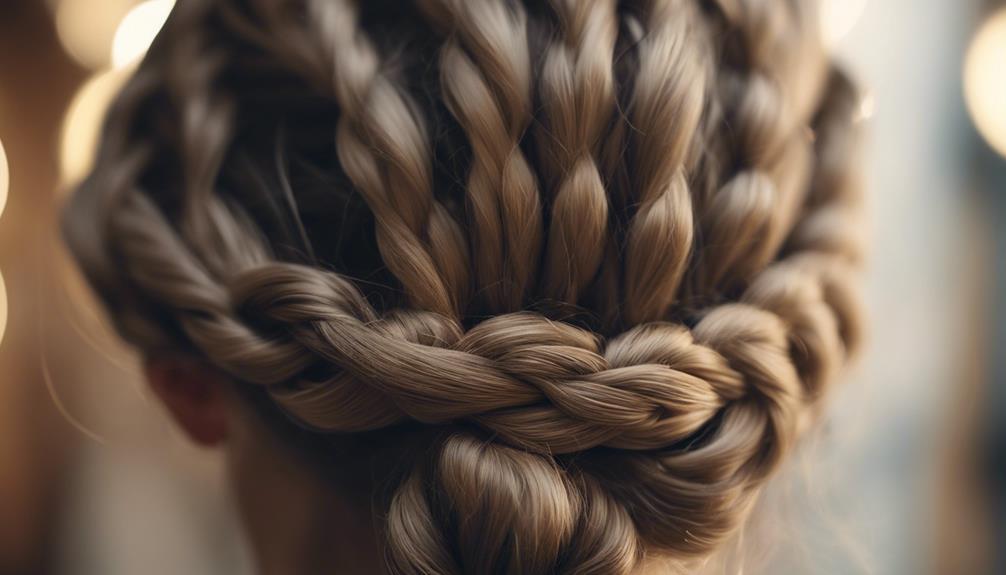
The twisted rope braid intertwines two hair sections in opposite directions to create a stylish and polished look. This chic and elegant braid is a versatile option, perfect for upgrading an updo hairstyle effortlessly.
To begin crafting a twisted rope braid, one can start with a high ponytail as the foundation. By twisting two sections of hair in opposite directions and then intertwining them, a sophisticated look can be achieved with minimal effort.
Utilizing tutorials can help master the twisted rope braid technique, ensuring a flawless finish every time. Whether for a casual day out or a formal event, the twisted rope braid adds a touch of sophistication to any look.
Consider trying out this twisted rope braid for a stylish and sophisticated hairstyle that's sure to turn heads.
Frequently Asked Questions
Which Braid Is the Easiest to Learn?
The easiest braid to learn is the classic three-strand braid. It serves as a foundational skill for braiding techniques. Beginners can start with front braids, a simpler variation. Practice a basic knotless pattern for easy learning.
Which Type of Braid Is the Best?
When determining the best type of braid, one must consider personal hair type, style preference, and desired outcome. Factors like length, thickness, and texture play a significant role. Experimenting and seeking professional advice can help find the ideal braid.
What Are the Names of Braiding Styles?
When exploring braiding styles, individuals can discover a variety of options such as Box Braids, French Braids, and Fishtail Braids. Each style offers a unique aesthetic and can be customized to suit different preferences and occasions.
What Braids Are Trending Right Now?
Braids have taken the fashion world by storm with knotless braids leading the trend. Box braids with curled ends and Fulani braids with colorful accents are all the rage. Jumbo knotless coi braids and French braids with curly extensions are also in vogue.
Conclusion
To sum up, braiding your hair is a versatile way to create different looks for any occasion. Whether you choose a basic braid, French braid, Dutch braid, pull-through braid, fishtail braid, waterfall braid, or twisted rope braid, there are endless possibilities to explore.
Experiment with these different types of braids to add a touch of style and flair to your hair routine. Remember, practice makes perfect, so don't be afraid to try out new styles and techniques.
